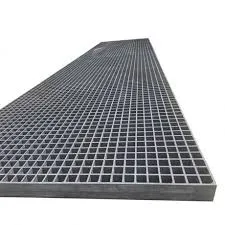
-
 Afrikaans
Afrikaans -
 Albanian
Albanian -
 Amharic
Amharic -
 Arabic
Arabic -
 Armenian
Armenian -
 Azerbaijani
Azerbaijani -
 Basque
Basque -
 Belarusian
Belarusian -
 Bengali
Bengali -
 Bosnian
Bosnian -
 Bulgarian
Bulgarian -
 Catalan
Catalan -
 Cebuano
Cebuano -
 China
China -
 China (Taiwan)
China (Taiwan) -
 Corsican
Corsican -
 Croatian
Croatian -
 Czech
Czech -
 Danish
Danish -
 Dutch
Dutch -
 English
English -
 Esperanto
Esperanto -
 Estonian
Estonian -
 Finnish
Finnish -
 French
French -
 Frisian
Frisian -
 Galician
Galician -
 Georgian
Georgian -
 German
German -
 Greek
Greek -
 Gujarati
Gujarati -
 Haitian Creole
Haitian Creole -
 hausa
hausa -
 hawaiian
hawaiian -
 Hebrew
Hebrew -
 Hindi
Hindi -
 Miao
Miao -
 Hungarian
Hungarian -
 Icelandic
Icelandic -
 igbo
igbo -
 Indonesian
Indonesian -
 irish
irish -
 Italian
Italian -
 Japanese
Japanese -
 Javanese
Javanese -
 Kannada
Kannada -
 kazakh
kazakh -
 Khmer
Khmer -
 Rwandese
Rwandese -
 Korean
Korean -
 Kurdish
Kurdish -
 Kyrgyz
Kyrgyz -
 Lao
Lao -
 Latin
Latin -
 Latvian
Latvian -
 Lithuanian
Lithuanian -
 Luxembourgish
Luxembourgish -
 Macedonian
Macedonian -
 Malgashi
Malgashi -
 Malay
Malay -
 Malayalam
Malayalam -
 Maltese
Maltese -
 Maori
Maori -
 Marathi
Marathi -
 Mongolian
Mongolian -
 Myanmar
Myanmar -
 Nepali
Nepali -
 Norwegian
Norwegian -
 Norwegian
Norwegian -
 Occitan
Occitan -
 Pashto
Pashto -
 Persian
Persian -
 Polish
Polish -
 Portuguese
Portuguese -
 Punjabi
Punjabi -
 Romanian
Romanian -
 Russian
Russian -
 Samoan
Samoan -
 Scottish Gaelic
Scottish Gaelic -
 Serbian
Serbian -
 Sesotho
Sesotho -
 Shona
Shona -
 Sindhi
Sindhi -
 Sinhala
Sinhala -
 Slovak
Slovak -
 Slovenian
Slovenian -
 Somali
Somali -
 Spanish
Spanish -
 Sundanese
Sundanese -
 Swahili
Swahili -
 Swedish
Swedish -
 Tagalog
Tagalog -
 Tajik
Tajik -
 Tamil
Tamil -
 Tatar
Tatar -
 Telugu
Telugu -
 Thai
Thai -
 Turkish
Turkish -
 Turkmen
Turkmen -
 Ukrainian
Ukrainian -
 Urdu
Urdu -
 Uighur
Uighur -
 Uzbek
Uzbek -
 Vietnamese
Vietnamese -
 Welsh
Welsh -
 Bantu
Bantu -
 Yiddish
Yiddish -
 Yoruba
Yoruba -
 Zulu
Zulu
Fiberglass Clarification System for Efficient Water Treatment and Improved Filtration Processes
Understanding Fiberglass Clarifier Systems A Sustainable Solution for Water Treatment
In recent years, the demand for efficient and sustainable water treatment solutions has grown considerably. Among the various methods available, fiberglass clarifier systems have emerged as a popular choice, particularly in industrial and municipal applications. These systems offer several benefits, including durability, corrosion resistance, and cost-effectiveness, making them an ideal choice for modern water treatment facilities.
What is a Fiberglass Clarifier System?
A fiberglass clarifier system is designed to remove solids from liquids, enhancing the quality of water through a process known as clarification. This system consists of a series of tanks or basins made from fiberglass reinforced plastic (FRP). The process begins with the introduction of wastewater into the system, where gravity allows heavier solids to settle at the bottom, forming a sludge layer. The clarified water then flows over a weir, exiting the clarifier for further treatment or discharge.
Advantages of Fiberglass Materials
Fiberglass, as a material, presents significant advantages over traditional materials such as concrete and steel. One of its most remarkable properties is its resistance to corrosion. Unlike metal, fiberglass does not rust, which allows it to withstand harsh chemicals and varying environmental conditions. This characteristic is particularly important in wastewater treatment facilities, where chemical exposure is constant.
Additionally, fiberglass is lightweight and flexible, which makes installation easier and faster compared to heavier materials. This feature can reduce labor costs and expedite the construction or retrofitting of a clarifier system. Moreover, the seamless construction of fiberglass tanks minimizes the risk of leaks, further enhancing the system's reliability and efficiency.
Efficiency and Performance
fiberglass clarifier system

Fiberglass clarifier systems are recognized for their operational efficiency. They can effectively manage varying flow rates without compromising performance. This flexibility is vital for facilities dealing with fluctuating wastewater volumes due to seasonal changes, equipment operation cycles, or operational surges.
The clarifier's design also contributes to improved settling rates and overall performance. With properly sized tanks and strategically placed baffles, fiberglass clarifiers can optimize the retention time of wastewater, ensuring that solids have sufficient time to settle. This results in cleaner effluent water, which can either be reused or safely discharged back into the environment.
Environmental Considerations
As the world grapples with water scarcity and pollution, the implementation of fiberglass clarifier systems aligns with the growing need for sustainable practices. By efficiently removing contaminants from water, these systems play a crucial role in local and global efforts to preserve water resources. Furthermore, the longevity and low maintenance requirements of fiberglass materials contribute to reduced waste and lower lifecycle costs.
Applications and Versatility
Fiberglass clarifier systems are versatile and applicable in various sectors, including municipal wastewater treatment plants, industrial processing, and stormwater management. They can be tailored to meet specific operational needs, from compact systems for small facilities to large-scale setups for extensive industrial applications.
Conclusion
In summary, fiberglass clarifier systems represent a significant advancement in the field of water treatment technology. Their unique properties, including corrosion resistance, lightweight design, and efficient performance, make them ideal for addressing the challenges of modern wastewater management. With an increasing emphasis on sustainability and environmental protection, the adoption of such systems will likely continue to grow, playing a vital role in ensuring cleaner water for future generations. As industries and municipalities increasingly turn to innovative solutions, fiberglass clarifiers offer a promising pathway towards effective and sustainable water treatment.









